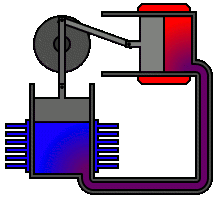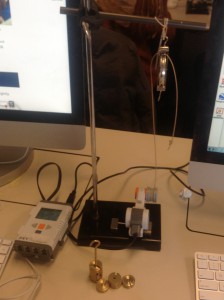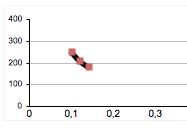Today, I will blog about the about old devices that were invented such as the Heat Engine and the Peltier Device that have being used for many electrical purposes. As a future electrical engineer, the peltier Device is something that I always have interest in and think I could use it to create a sweater with heat or a flashlight that can be turn on by hand temperature. Unfortunately, both devices are already on the market. So a heat engine is a system is used to produce heat using temperature difference creating a mechanical energy. This process has being more effective and less polluted than the steam engine that was used previously.

Second, Thermoelectric cooling is a device that creates a heat flux between the joints of two different materials. The way it works is it transfers heat from one side to the other using temperature difference to create a current.

Application
According to Wikipia.com, “A heat “source” generates thermal energy that brings the working substance to the high temperature state. The working substance generates work in the “working body” of the engine while transferring heat to the colder “sink” until it reaches a low temperature state. During this process some of the thermal energy is converted into work by exploiting the properties of the working substance.”
According to ASK.com, “a peltier is also known as a thermoelectric module because it has thermo electric facets, hence works as a heat pump. A module flow of direct current moves heat from a side of the module to the other, cooling one side and heating the other. A single stage can make a temperature variation of 70C, and more than 100C in a multistage unit. They can be used either for heating or for cooling.”
Pros and Cons
Peltier Device
- Pros
- Solid state (no moving parts)
- No maintenance
- Long service lifetime
- Cons
- Large electrical power requirements
- Inefficient compared to phase change cooling
Heat Engine
Pros
• The process is easy and flexible.
• Unlike its cousin, the steam engine, its emission is safer and better to control.
• Its pressure is stable unlike the steam engine.
Cons
• The machine takes time to warm up in order to produce mechanical energy.
• The system requires effective equipment and it costs a lot.
• It is dependable on temperature difference to create as much power.
So the heat engine and peltier device are both using temperature difference to create heat. While those two systems are effective, they are limited in their usage because in the process of creating heat, there will always be a heat loss and that prevent them to power up and use in big materials like planes and cars.
http://www.thermoelectrics.com/introduction.htm,
http://en.wikipedia.org/wiki/Heat_engine
http://www.ask.com/question/how-does-peltier-work












